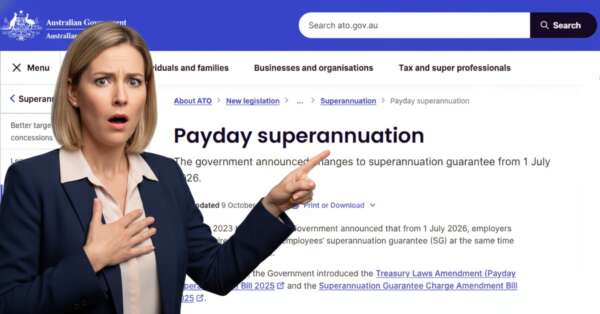The Fringe Benefits Tax year wrapped up on 31 March 2025. If you’re sitting there thinking “we don’t provide fringe benefits, so this doesn’t apply to us” – you might want to think again.
The ATO has been getting increasingly aggressive about FBT compliance. They’re using AI data-matching tools now to hunt down employers who aren’t correctly reporting fringe benefits. And here’s the kicker – they’re going after businesses that don’t think they’ve provided any benefits at all.
That Friday staff lunch? The Christmas party? Letting someone use the company car for personal trips? These all count as fringe benefits. Most business owners don’t realize how broad the definition actually is.
The Case for Filing a Nil Return
Even if you genuinely haven’t provided any fringe benefits, the ATO is suggesting you should still lodge a Nil FBT Return. This isn’t just bureaucratic box-ticking – there are real strategic reasons why this makes sense.
First, it limits the ATO’s review window. Lodge a return and they can only audit you for two years back. Don’t lodge anything? They can go back five years. That’s a big difference when you’re talking about potential penalties and interest.
Second, it proves you’ve actually looked at your situation in good faith. The ATO loves compliance, even when the outcome is zero tax payable. It shows you’re aware of your obligations and you’ve made a conscious decision about your position.
Third, it prevents future headaches. Sometimes benefits get reduced to nil through employee contributions or other arrangements. Without a lodged return, you could still face review risks down the track.
And finally, certain FBT calculation methods actually require a lodged return. The Operating Cost Method for cars is one example – you can’t elect this method without filing.
What Counts as a Fringe Benefit?
This is where most businesses get caught out. The definition is much broader than people think.
Company cars are the obvious one. But it’s not just the flashy sales rep vehicles – if someone takes the work ute home occasionally, that counts. Parking spaces in the city can be fringe benefits. Low-interest or interest-free loans to employees definitely count.
Entertainment is a big trap. That staff Christmas party, team lunches, client entertainment where employees benefit – it all adds up. Even small things like gym memberships, phone allowances, or professional development courses can trigger FBT obligations.
The ATO’s AI systems are getting better at spotting these. They’re cross-referencing expense claims, GST returns, payroll data, and other information to identify potential fringe benefits that haven’t been reported.
The Compliance Landscape is Changing
The ATO’s approach to FBT has shifted dramatically. They used to be relatively hands-off unless you were obviously non-compliant. Now they’re actively hunting for discrepancies using sophisticated data matching.
They’re looking at businesses that claim GST on entertainment expenses but don’t lodge FBT returns. They’re checking vehicle registrations against FBT filings. They’re analysing expense patterns to identify potential unreported benefits.
This isn’t paranoia – it’s the new reality. The ATO has invested heavily in technology and they’re using it aggressively across all tax types, including FBT.
Practical Steps for Business Owners
Start by reviewing what you’ve actually provided to employees over the FBT year. Look beyond the obvious stuff. Check expense accounts for entertainment, travel, accommodation, gifts, awards, or anything else that might have benefited employees.
Consider your vehicle arrangements carefully. Are employees taking work vehicles home? Using them for personal trips? Even occasional personal use can create FBT liability.
Review any loans or financial arrangements with employees. Below-market interest rates or interest-free loans are classic fringe benefits that get missed.
Look at your entertainment expenses. Client lunches where employees also ate, team building activities, Christmas parties – these often have FBT implications.
Don’t forget about non-cash benefits. Gym memberships, professional development, phone allowances, parking – they all count.
The Cost of Getting it Wrong
FBT penalties are serious. The ATO can impose penalties of up to 75% of the tax shortfall for intentional disregard. Even for lack of reasonable care, you’re looking at 25% penalties.
Interest compounds daily from the original due date. For the 2025 FBT year, returns and payments were due by 21 May 2025. If you haven’t lodged and there’s tax payable, the interest clock has been ticking.
There’s also the audit risk. Once the ATO decides to review your FBT position, they’ll often expand the scope to look at other tax obligations as well. What starts as an FBT query can become a comprehensive business review.
Making the Right Choice
The bottom line is this – lodging an FBT return, even a nil return, is usually the smart play. It demonstrates compliance, limits your exposure to extended review periods, and gives you certainty about your position.
FBT is genuinely complex. The legislation is detailed and the practical application can be tricky. But the consequences of getting it wrong are getting more severe as the ATO’s compliance activities ramp up.
If you’re unsure about your position, it’s worth getting professional advice. The cost of preparation is usually minimal compared to the potential downside of non-compliance.
The 2025 FBT year is done, but the compliance obligations remain. Don’t let this slide – the ATO certainly won’t.
Need help? Our team at Keypoint Accountants & Advisors is here to guide you through every step. FBT is complex – but we make it simple.
Preparation and lodgement of FBT Returns start from $150 + GST.
Contact us today:-
Office: 07 5585 0600












